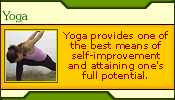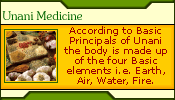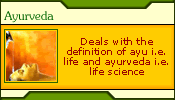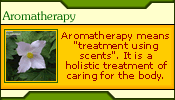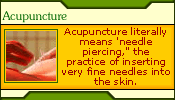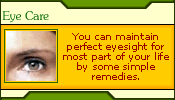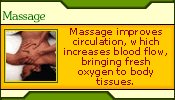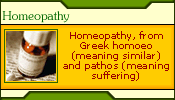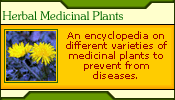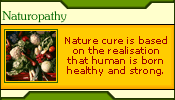|
21. Trikonasana ( Triangle pose ) :
Stand erect, with your legs apart. Stretch your arms up to shoulder
level. Bend your trunk forwards and twist to the left, looking upwards
and keeping your left arm raised at an angle of 900. Place your
right palm on your left foot without bending the knees. Maintain
this pose for a few seconds. Then straighten up and return to the
normal position. Repeat the procedure on the other side.
Trikosana is an all-round stretching exercise. It keeps the spinal
column flexible and reduces the fat on the lateral sides of the
body. Besides, it stimulates the adrenal glands and tones up the
abdominal and pelvic organs.
22. Pranayama
Prana means ' vital force ' and Ayama means ' control ' in Sanskrit.
Thus Pranayama means the control of the vital force through concentration
and regulated breathing. By means of controlled breathing that is,
inhaling and exhaling by holding the breath for a fixed time and
changing the rhythm of inspiration and expiration, it is possible
to influence the life-force in the body. Pranayama is the process
by which such conscious control is achieved through controlled and
rhythmical breathing . Pranayama purifies the channels along which
the life stream of 'prana' flows in the body and prevents various
disorders. It increases one's resistance to respiratory diseases.
The best position in which to practice pranayama is the padmasana
or lotus pose. If for some reason that position is difficult to
adopt, it can be done while sitting in any comfortable pose. The
important thing is to keep the back, neck and head in a straight
line. The body should be in its natural relaxed condition and this
can be achieved by resting a few minutes in shavasan. If necessary,
use your right finger and thumb on either side of the nose to control
the right and left nostrils during inhalation and exhalation. In
practicising pranayama, a ratio of two to one should be maintained
throughout, that is, the exhalation time should be double that required
for inhalation. For instance, if inhalation takes 5 seconds, exhalation
should take 10 seconds. Both inhalation and exhalation should be
smooth and quiet.
23. Anuloma -viloma :
This is also known as Nadishuddhi pranayama. Sit in any comfortable
meditative pose, keeping your head,neck and spine erect. Rest your
left hand on your left knee. Close your right nostril by pressing
the tip of your right thumb against it. Breathe out slowly through
the left nostril. Inhale slowly and deeply through the left nostril,
keeping the right nostril closed. Close your left nostril with the
little finger and ring finger of your right hand and exhale through
the right nostril. Then inhale through the right nostril, keeping
the left nostril closed and, lastly, exhale through the left nostril,
keeping the right nostril closed. This completes one round ofanuloma-viloma.
Repeat the entire process. Inhaling and exhaling should be done
very slowly, without making any sound.
This pranayama is a process of purification. It strengthens the
lungs and calms the nerves. It helps cure cough and cold, insomnia,
chronic headache and asthama.
24. Ujjayi :
Sit in any comfortable meditative pose. Inhale slowly, deeply and
steadily through both nostrils with a low uniform sound through
the glottis. Hold your breathe for a second or two after inhaling
and then exhale noisily only through the left nostril, keeping the
right nostril closed. Do this as often as required. This pranayama
clears the nasal passage and helps the functioning of the thyroid
gland and benefits respiratory disorders, especially bronchitis
and asthama. Persons suffering from high blood pressure should not
practice ujjayi.
25. Bhastrika :
'Bhastrika' means 'bellows.' It is performed by instant and quick
expirations of breath. There are many varieties of bhastrika. The
simplest technique is as follows : Sit in padmasana. Do 20 strokes
of kapalbhati. Inhale and exhale rapidly, making a puffing sound.
This is a good exercise for abdominal viscera and lungs.
26. Sheetali :
Sit in padamasana or any other comfortable posture. Stick your
tongue out about an inche from the lips, rolled up at the sides
to form a channel like a bird's beak. Suck in air through the channel.
After a full inhalation, slowly close your mouth, hold your breath
and exhale slowly through both nostrils. This completes the exercise.
Repeat as required. This pranayama cools the body and mind, activates
the liver and bile and has beneficial effects on the circulation
and body temperature.
27. Sitkari :
IN sitkari a sound is produced while inhaling by opening the mouth
a little, placing the tip of the tongue against the lower front
teeth and then sucking the air in slowly. After holding your breath,
exhale through both nostrils. This exercise helps to control thirst,
hunger and laziness.
28. Suryabhedan :
'Surya-nadi ' is the right nostril and ' ChandraNadi' is the left
nostril. In this pranayama, one always uses the right nostril for
inhalation. Sit in padmasan or any other suitable posture. Keep
your head, neck and back straight. Inhale through the right nostril.
Hold your breath and then exhale through the left nostril. Hold
your breath and then exhale through the left nostril. Repeat as
often as required. This pranayama increases gastric juices and helps
digestion. It also fortifies the nervous system and clears the sinuses.
29. Bhramari :
In this pranayama, the buzzing sound of a bee is produced and hence
it is called bhramari. Keep your mouth closed while inhaling. Exhale
through both nostrils, producing the humming sound of a bee. This
pranayama affects the ears, nose, eyes and mouth and makes the complexion
glow. It also helps those suffering from insomnia.
|


